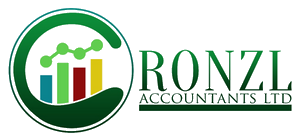The nature of the expenditure that is spent in business is very important.
The reason for this is that it determines the accounting and tax treatment.
Most times we do not have a choice because we do need to acquire them to help our business grow.
In this blog post, I would like to explain some of the issues.

WHAT IS CAPITAL EXPENDITURE?
These are the expenses that is spent on more tangible items or services that relate to tangible assets.
These items usually last more than two years, however some last between 1 to 2 years.
An example of such is paying for the purchase of a computer, or office furniture, and paying for legal services that relate to the acquisition of a property.
WHAT IS A REVENUE EXPENDITURE?
These are expenses that are not tangible or services that relate to those that are not tangible.
Due to the nature of these items, they would need to be replaced yearly.
Example of such is paying for accountancy, telephone or buying stationeries and buying consumables for business purpose.
CAPITAL VS REVENUE?
Some of the transactions can be easily identified while some can be confusing and easily misclassified.
The accounting treatment for revenue items is just to deduct them as expenses in the profit and loss statement.
These deductions will create a tax relief when the tax is calculated therefore the business owner pays lower tax.
However, some capital expenditure is deducted as accounting expenses e.g. depreciation of an asset or payment for legal services.
The accounting treatment for most capital items is to be added to the balance sheet.
But the tax treatment depends on the items bought.
The expenditure that has a capital nature is generally not allowable as a revenue deduction when computing taxable profits.
If it qualifies for capital allowance, depending on the nature of the capital expenditure, the business owner could have tax relief on the items purchased in the tax year.
The rate of the tax relief would depend on the items bought because some tax relief could be at 100% of the cost or less.
CONCLUSION.
The main issue is that HMRC has stated that there is no simple test that can be applied to confirm the nature of some complicated transactions.
When these are complicated and hard to differentiate, they are usually determined by reference to the relevant facts that are applied to the expenditure incurred and the nature of the trade carried out by the business owners.
Thank you for reading and I hope this blog will help you to determine and treat your expenditure correctly in the future.
If you would like to read more, kindly click
If you would like more support from us, you can contact us by clicking this link.

